- Faceted Girdle
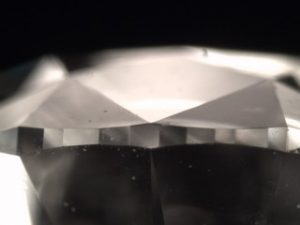
Faceted Girdle in a Diamond
A faceted girdle in a diamond refers to a girdle that has been polished and cut into small facets, rather than left rough or bruted. This technique enhances the diamond’s overall appearance, improves light performance, and contributes to a higher symmetry grade.What is the Girdle?
The girdle is the outer edge of a diamond, separating the crown (top) from the pavilion (bottom). It can vary in thickness and finish, impacting both durability and light reflection.Types of Girdles in Diamonds
Girdle Type Description Common in
Faceted Girdle Polished with small, flat surfaces (facets) to enhance brilliance. High-quality diamonds, modern cuts.
Bruted Girdle Unpolished, frosted appearance, created using traditional bruting techniques. Older-cut diamonds, some industrial diamonds.
Polished Girdle Smooth, highly polished, without facets. Step-cut diamonds (Emerald, Asscher).
Benefits of a Faceted Girdle
Improves Light Performance – Helps reduce light leakage by allowing better refraction.
Enhances Symmetry & Proportions – Adds precision to the diamond’s cut.
Eliminates a Frosty Look – Unlike bruted girdles, faceted girdles appear more refined and modern.
Common in High-Quality Diamonds – Many GIA, DCLA, and IGI-certified diamonds feature faceted girdles.Does a Faceted Girdle Affect Value?
A faceted girdle does not significantly change a diamond’s value but contributes to its overall aesthetic appeal and symmetry rating. It is often preferred in Round Brilliant, Cushion, and Oval diamonds, while step-cut diamonds like Emerald and Asscher may have a polished girdle instead. - Facets
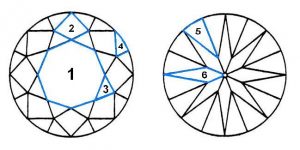
Diamond Facets: Understanding the Cut & Light Performance
A facet is a flat, polished surface on a diamond that interacts with light to create brilliance, fire, and scintillation. The number, arrangement, and angles of these facets determine how well a diamond reflects and refracts light.Types of Facets in a Diamond
A brilliant-cut diamond (such as a Round Brilliant) typically has 57 or 58 facets, depending on whether the culet is faceted. These facets are grouped into different sections:Table Facet – The largest and central facet on the crown, responsible for most of the light entering the diamond.
Crown Facets – The upper portion of the diamond, including:
Star Facets (8) – Surround the table and direct light into the diamond.
Bezel Facets (8) – Kite-shaped facets between the star and upper girdle facets.
Upper Girdle Facets (16) – Connect the bezel facets to the girdle.
Girdle Facets – The outer edge, which may be bruted, polished, or faceted.
Pavilion Facets – The lower half of the diamond, responsible for light reflection, including:
Lower Girdle Facets (16) – Extend from the girdle down to the pavilion main facets.
Pavilion Main Facets (8) – Larger facets that control the return of light.
Culet Facet (Optional) – A tiny facet at the very bottom of the diamond (if present).
Facet Count in Different Diamond Cuts
Diamond Cut Number of Facets Key Features
Round Brilliant 57 or 58 Maximized brilliance & fire.
Princess Cut 58–76 Sharp corners, modern appeal.
Cushion Cut 58–64 Soft, rounded shape with vintage charm.
Emerald Cut 50–58 Step-cut, mirrors effect, less brilliance.
Oval Cut 57–58 Elongated brilliance, hides inclusions well.
Marquise Cut 58 Elegant, boat-shaped cut.
Pear Cut 58 Teardrop shape with brilliant facets.
Radiant Cut 70 Hybrid of step and brilliant cut.
Asscher Cut 50–58 Square step-cut with deep clarity.
Heart Cut 56–58 Romantic shape, requires symmetry.
Why Are Facets Important?
Brilliance – Facets control how light enters and exits the diamond, creating sparkle.
Fire – Well-angled facets disperse light into a spectrum of colors.
Scintillation – Facets create a contrast of light and dark patterns, enhancing visual appeal.
Cut Quality – The precision of facet arrangement impacts a diamond’s GIA Cut Grade (Excellent to Poor).Faceted Girdle vs. Polished Girdle vs. Bruted Girdle
Faceted Girdle – Small, polished facets along the girdle to improve light performance.
Polished Girdle – Smooth and shiny, common in step-cut diamonds like Emerald and Asscher.
Bruted Girdle – Frosty or rough, found in older or unpolished diamonds.1 Table
- Fancy Colour
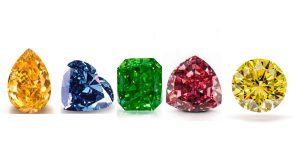
Fancy Coloured Diamonds: Rarity, Value & Beauty
Fancy coloured diamonds are natural diamonds that exhibit intense colours beyond the typical white or colourless range. Unlike traditional diamonds graded on a D-to-Z colour scale (where lower grades indicate yellow or brown tints), fancy colour diamonds are valued for their saturation and rarity.How Do Fancy Coloured Diamonds Get Their Colour?
Chemical Elements & ImpuritiesNitrogen → Yellow & Orange Diamonds
Boron → Blue Diamonds
Hydrogen → Violet Diamonds
Crystal Lattice DistortionsPink & Red Diamonds – Result from pressure-related distortions in the diamond’s atomic structure.
Green Diamonds – Exposed to natural radiation over millions of years.
Graphite & Other InclusionsBlack Diamonds (Carbonado) – Have numerous graphite or sulphide inclusions, giving them an opaque black appearance.
Types of Fancy Coloured Diamonds
Colour Cause of Colour Rarity Famous Examples
Pink Lattice distortion Extremely rare The Pink Star, Argyle Pink Diamonds
Red Lattice distortion Rarest of all The Moussaieff Red Diamond
Blue Boron impurity Very rare The Hope Diamond, The Blue Moon Diamond
Green Natural radiation exposure Rare The Dresden Green Diamond
Yellow Nitrogen impurity Common The Tiffany Yellow Diamond
Orange High nitrogen levels Very rare The Pumpkin Diamond
Purple Hydrogen impurity Rare The Supreme Purple Star
Brown (Champagne & Cognac) Structural defects Common Argyle Champagne Diamonds
Black Graphite inclusions Common The Black Orlov Diamond
White (Fancy White) Cloudy internal inclusions Rare The White Swan Diamond
How Fancy Colour Diamonds Are Graded?
Unlike colourless diamonds, fancy coloured diamonds are graded based on three main factors:Hue – The primary colour (e.g., blue, pink, yellow).
Tone – Lightness or darkness of the colour.
Saturation – Intensity and strength of the colour (higher saturation means higher value).
GIA Fancy Colour Scale
Faint
Very Light
Light
Fancy Light
Fancy
Fancy Intense
Fancy Vivid (Highest value)
For example, a Fancy Vivid Pink Diamond is far more valuable than a Fancy Light Pink Diamond due to its stronger colour saturation.Why Are Fancy Colour Diamonds So Valuable?
Extreme Rarity – Only 1 in 10,000 diamonds is a fancy colour diamond.
High Investment Value – Certain colours (Pink, Red, Blue, Green) appreciate over time.
Unique Beauty – Each coloured diamond is one of a kind.
Celebrity & Historical Demand – Famous diamonds increase awareness and desirability. - Fancy Shape
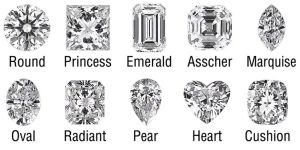
Fancy Shape Diamonds: Beyond the Round Brilliant
A fancy shape diamond is any diamond cut other than Round Brilliant. These shapes offer unique aesthetics, individuality, and often better value per carat than round diamonds.Popular Fancy Diamond Shapes & Features
Shape Facets Key Features Best For
Princess Cut 58-76 Sharp corners, modern brilliance Contemporary engagement rings
Cushion Cut 58-64 Rounded corners, vintage charm Classic & romantic settings
Oval Cut 57-58 Elongated for a slimming effect Maximizing finger coverage
Emerald Cut 50-58 Step-cut, hall-of-mirrors effect Elegant, sophisticated look
Radiant Cut 70 Hybrid of step and brilliant cuts Maximum brilliance in a rectangular shape
Asscher Cut 50-58 Square step-cut, deep clarity Vintage style, Art Deco appeal
Marquise Cut 58 Boat-shaped, elongates fingers Unique & dramatic settings
Pear Cut 58 Teardrop shape, combines round & marquise Unique & elegant engagement rings
Heart Cut 56-58 Romantic, requires perfect symmetry Sentimental & statement jewellery
Trillion Cut 31-50 Triangular, high brilliance Side stones or unique centre stones
Why Choose a Fancy Shape Diamond?
Better Value – Fancy shapes cost 20-40% less per carat than round diamonds.
Unique Look – Stand out with a distinctive, non-traditional shape.
Larger Appearance – Some cuts (Oval, Marquise, Pear) look bigger than a round of the same carat weight.
Historical & Modern Appeal – From vintage Asschers to contemporary Princess cuts.Cut Quality in Fancy Shapes
Unlike Round Brilliants, fancy shapes don’t have a standardized cut grade from GIA or DCLA. Instead, look for:
Well-balanced proportions – Avoid overly deep or shallow cuts.
Symmetry & Polish – Essential for sparkle and light performance.
Length-to-Width Ratio – Determines how the shape appears (e.g., elongated vs. square Cushion Cut).Most Brilliant Fancy Shapes (Maximum Sparkle)
Princess – Second only to Round Brilliant in sparkle.
Oval – Brilliant-cut facets for high fire & brilliance.
Radiant – Intense sparkle with a rectangular shape.
Marquise & Pear – Brilliant-cut facets with elongation.Best Fancy Shapes for Finger Slimming Effect
Oval, Marquise, and Pear – Create an illusion of longer fingers.
Emerald & Asscher – Sleek, elegant elongation.Fancy Shapes & Bowtie Effect
Some fancy shapes (Oval, Marquise, Pear, and some Cushions) can exhibit a “bowtie effect”—a dark shadow across the centre of the diamond due to poor light reflection.
Avoid deep bowties by choosing a well-proportioned cut.Which Fancy Shape is Right for You?
For Maximum Sparkle: Princess, Radiant, Oval
For Vintage Elegance: Emerald, Asscher, Cushion
For a Unique Look: Marquise, Pear, Heart, Trillion
For Best Finger Coverage: Oval, Marquise, Pear - Feathers
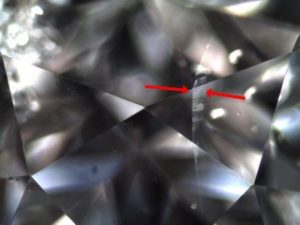
Feather in a Diamond: What It Means & Its Impact on Clarity
A feather in a diamond refers to a type of inclusion that resembles a small crack or fracture within the stone. It is a common term used in diamond grading, and it plays an important role in the diamond’s clarity.What is a Feather?
Feathers are essentially internal cracks or fractures that can occur naturally during the diamond’s formation or from external pressure after the diamond is mined.
The term “feather” is used because the inclusion often looks like a branching or “feathery” structure under magnification.
Feather in Diamond Clarity Grading
The presence of a feather can affect a diamond’s clarity grade, but not all feathers are equal. Here’s how a feather impacts grading:Clarity Grade Description Impact of Feather
Flawless (FL) No inclusions or blemishes visible under 10x magnification. No feathers.
Internally Flawless (IF) No inclusions visible under 10x magnification; only minor blemishes. No feathers.
Very Very Slightly Included (VVS1, VVS2) Minute inclusions that are very difficult to detect under 10x magnification. Feathers may be present but hard to find.
Very Slightly Included (VS1, VS2) Minor inclusions visible under 10x magnification. Feathers may be visible but typically not easily seen with the naked eye.
Slightly Included (SI1, SI2) Inclusions visible under 10x magnification and possibly to the naked eye. Feathers may be visible to the naked eye in lower clarity grades.
Included (I1, I2, I3) Inclusions visible to the naked eye, affecting transparency and brilliance. Feathers likely visible and may impact the diamond’s appearance.
How Do Feathers Affect a Diamond’s Appearance?
Location of the Feather:Near the centre of the diamond can have a more noticeable impact on brilliance.
On the edges or girdle may not be as visible and have less impact on appearance.
Size of the Feather:Small feathers may be negligible and have little effect on the diamond’s brilliance or beauty.
Larger feathers may disrupt the diamond’s light performance or cause a visible flaw.
Transparency:Some feathers can cause a cloudy or milky appearance, impacting the diamond’s overall sparkle.
Are Feathers Dangerous?
Feathers can affect the structural integrity of a diamond, especially if they are large or extend to the surface. However, many diamonds with small feathers are still quite strong and durable. A feather that reaches the girdle (outer edge) or surface can make the diamond more vulnerable to breaking or chipping if not handled carefully.How to Minimize the Impact of Feathers
Check the Location: Ensure the feather is not near the surface or the girdle, as these areas are more likely to be prone to damage.
Choose Smaller Feathers: Opt for diamonds with small, isolated feathers that do not significantly impact clarity.
Magnification Review: Always inspect the diamond under 10x magnification to assess the feather’s size and impact.Are Feathers Always a Dealbreaker?
Not necessarily. Many diamonds with small, well-placed feathers still retain their brilliance, especially if the feathers are near the centre or on the pavilion and not on the surface. If the feather is not visible to the naked eye, it often does not affect the overall aesthetic or investment value significantly. - Finish
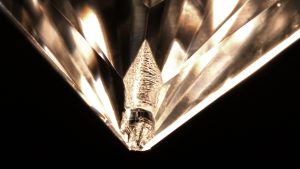
Diamond Finish: What It Means & Why It Matters
Diamond finish refers to the overall quality of the diamond’s cut, polish, and symmetry. These factors affect how well a diamond reflects light, its brilliance, and its overall appearance. A well-finished diamond will display greater sparkle and beauty, while a poorly finished diamond may look dull or lackluster.Components of Diamond Finish
Cut QualityThe cut of a diamond is its most important characteristic because it directly affects its ability to sparkle and reflect light. The cut refers to how well the diamond has been shaped, and how the facets have been arranged and polished.
Cut Quality Grade (according to DCLA):
Excellent
Very Good
Good
Fair
Poor
A diamond with an Excellent cut will have the best balance of brilliance, fire, and scintillation. A diamond that’s cut poorly may not reflect light as effectively and could appear dark or lackluster.Polish
Polish refers to the smoothness of the diamond’s surface after it has been cut. It is an essential part of the finish, as any scratches or blemishes on the surface can disrupt the diamond’s ability to reflect light.
Polish Quality is graded on a scale:
Excellent
Very Good
Good
Fair
Poor
A poorly polished diamond may have visible imperfections that can affect its brilliance, while an excellent polish enhances the diamond’s shine.Symmetry
Symmetry refers to how well the facets align with each other, and the overall shape of the diamond. If the facets are not aligned perfectly, it can create visual distortions or affect the diamond’s brilliance.
Symmetry Quality is graded as:
Excellent
Very Good
Good
Fair
Poor
A symmetrical diamond ensures that light is evenly reflected, enhancing the stone’s brilliance.How Finish Affects Diamond Appearance
Brilliance: A diamond with a good finish will reflect light more efficiently, creating a brighter and more sparkly stone. A poor finish, such as a poor cut or bad polish, can dull the diamond’s sparkle.
Light Performance: A well-finished diamond will show excellent light performance, including brightness (white light), fire (colour dispersion), and scintillation (sparkle).
Value: A diamond with a higher-quality finish is generally more valuable because it shows off the diamond’s natural qualities to their best advantage.
How to Identify a Well-Finished Diamond
Check the Certificate:
Look at the grading report from a reputable gemological laboratory (e.g., DCLA, GIA, AGS). The report will include grades for cut, polish, and symmetry.Examine the Diamond:
Use magnification (10x jeweller’s loupe) to inspect the polish for any surface blemishes.
Check the symmetry by observing how well the facets align with each other.
Consider the Cut Grade:Ideal/Excellent cut diamonds will generally have a superior finish in terms of polish and symmetry.
Fair or Poor cut diamonds may have visible defects and may not be as well-polished or symmetrical.The Importance of Diamond Finish
A well-finished diamond is essential for maximising its visual appeal and value. The finish affects how light interacts with the diamond and directly influences the amount of brilliance and fire it exhibits. Whether you are selecting a diamond for an engagement ring or as an investment, ensuring a high-quality cut, polish, and symmetry will ensure you receive a stone that displays its full beauty.Would you like help evaluating the finish of a specific diamond or understanding how it can impact the overall appearance?
- Fire
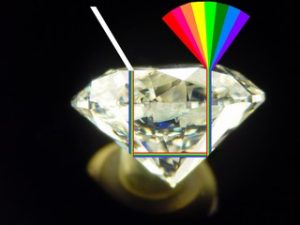
Fire in a Diamond: What It Is & How It Affects Beauty
Fire refers to the dispersion of light into the various colors of the rainbow when light passes through a diamond. It is one of the key characteristics that contribute to a diamond’s overall brilliance and beauty, alongside brilliance (white light reflection) and scintillation (sparkle).How Fire is Created in a Diamond
When light enters a diamond, it bends (refracts) due to the diamond’s high refractive index. As the light is reflected within the diamond and exits through the facets, it is split into the spectral colors (red, orange, yellow, green, blue, indigo, violet). The amount and intensity of this colorful dispersion are what we refer to as fire.Factors That Affect Fire in a Diamond
Cut:Diamond cut quality plays the most important role in how fire is displayed.
The angles and proportions of the diamond’s facets affect how light enters and exits, influencing the intensity of fire.
Well-cut diamonds will show a beautiful, rainbow-like dispersion of color, while poorly cut diamonds may not display as much fire.
Shape:Certain diamond shapes tend to show fire more prominently, especially those with more facets.
Round Brilliant diamonds have 57 facets, which allow for optimal dispersion of light.
Other shapes, like Cushion, Radiant, or Princess cuts, can also display significant fire, depending on the cut and facet arrangement.
Shapes with fewer facets, such as Emerald or Asscher, tend to show more of the white light (brilliance) than fire.
Quality of the Diamond:Higher-quality diamonds, particularly those with fewer inclusions and better clarity grades, will show more fire.
A clean diamond (with minimal or no inclusions) allows light to pass through freely and more evenly, enhancing its fire.
Light Source:The environmental lighting affects how fire is perceived. For example, diamonds show more fire under bright, direct light or artificial light sources like halogen lamps, which increase the rainbow-like dispersion.
Natural sunlight often brings out the full range of fire in a diamond.
Why Fire is Important
Visual Appeal:Fire contributes to the sparkling effect of a diamond, making it more vibrant and eye-catching. The play of colors—especially under direct light—is what makes a diamond seem alive and dynamic.
Brilliance and Aesthetic:Fire works in harmony with brilliance, which is the white light a diamond reflects. Together, brilliance and fire create the liveliness and beauty of a diamond.
Value:Diamonds that display more fire are generally more desirable because they are seen as more brilliant and beautiful. Well-cut diamonds that demonstrate a high level of fire can also fetch higher prices in the market.
How to Maximize Fire in a Diamond
Opt for an Ideal or Excellent Cut: A diamond with a top-tier cut will maximize fire, as the angles and proportions will be optimized to reflect and disperse light.
Look for Brilliance and Fire Combined: Ideal diamonds balance fire and brilliance, creating a dynamic and captivating sparkle.
Choose White Light to Enhance Fire: Certain lighting conditions can enhance the fire within a diamond. Direct sunlight and halogen lighting are best for showcasing a diamond’s colorful dispersion.
Conclusion: The Beauty of Fire in a Diamond
Fire is one of the most mesmerizing qualities of a diamond, making it sparkle with vibrant colors. It’s influenced by a combination of the diamond’s cut, shape, clarity, and the lighting under which it is viewed. Whether you’re choosing a diamond for an engagement ring or for investment, understanding the impact of fire will help you appreciate the stone’s brilliance and beauty. - Fish Eye
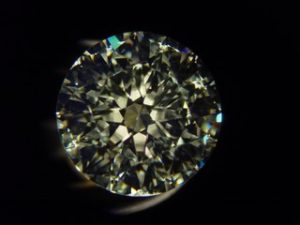
Fish Eye in a Diamond: What It Is and How It Affects Appearance
A fish eye is a type of optical flaw that can occur in diamonds, affecting their appearance and overall brilliance. It is typically caused by a shallow cut, which leads to the formation of a visible round or oval-shaped area that looks like the eye of a fish.What Causes a Fish Eye in a Diamond?
A fish eye typically happens when a diamond is cut too shallow, causing light to enter the diamond at an incorrect angle. When the light exits the diamond, it creates a dark area or a flat, lifeless spot in the centre of the diamond, resembling a fish’s eye. This dark spot results in a significant loss of the diamond’s brilliance.Key Characteristics of a Fish Eye:
Shape: Usually round or oval, resembling the eye of a fish.
Location: It is typically found near the centre of the diamond, where the light performance is compromised.
Effect on Sparkle: A fish eye causes a lack of brilliance in the affected area, and it may appear as a dark spot or cloudy patch when viewed face-up.
How Does a Fish Eye Affect a Diamond’s Value?
Aesthetic Impact: A fish eye diminishes the diamond’s overall sparkle and brilliance. Because it’s a noticeable flaw, it can detract from the overall beauty of the diamond.
Clarity: A fish eye is typically considered an inclusion, so it can affect the diamond’s clarity grade, especially if it’s visible to the naked eye.
Value: Diamonds with fish eyes usually have lower value, as they are less attractive due to their diminished brilliance.
How to Avoid a Fish Eye in a Diamond
Check the Cut Grade:A shallow cut is the primary cause of fish eyes, so it’s important to look for diamonds with a well-proportioned cut.
Ideally, choose diamonds with a cut grade of Excellent or Ideal, which ensures proper proportions and minimizes the risk of a fish eye.
Examine the Diamond’s Proportions:Diamonds that are cut too shallow (too flat) are more prone to fish eyes. Look at the depth percentage and table size to ensure they fall within the ideal range.
For round brilliant diamonds, the depth should ideally be around 59-62%, and the table should be around 53-58% for optimal performance.
Use Magnification:A 10x loupe can help identify a fish eye in a diamond, especially if it’s located in the center. Make sure to inspect the diamond carefully under magnification before purchasing.
Fish Eye in Diamonds
A fish eye is an undesirable flaw that can occur in diamonds with shallow cuts, resulting in a dark, lifeless spot that compromises the diamond’s overall brilliance. To avoid this flaw, it’s essential to choose diamonds with well-proportioned cuts and ensure that the cut grade is high.If you’re selecting a diamond and want to avoid the fish eye effect, it’s important to focus on the cut and proportions of the stone. Would you like guidance on selecting diamonds with optimal cut and brilliance?
- Flash Effect
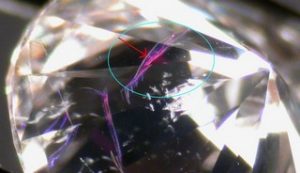
Flash Effect in Fracture-Filled Diamonds: What It Is and How It Affects Sparkle
The flash effect in a fracture-filled diamond refers to the dispersion of light and the sparkle that occurs as the diamond is moved or rotated, much like in any other diamond. However, in fracture-filled diamonds, the flash effect can be influenced by the quality and extent of the fracture filling, as well as how the filling interacts with light within the diamond.What Are Fracture-Filled Diamonds?
Fracture-filled diamonds are diamonds that have invisible fractures or cracks that have been filled with a substance, typically glass or a resin, to improve the diamond’s appearance. The filling material helps to mask the appearance of these inclusions, making the diamond look cleaner and less affected by visible cracks or fractures.However, while this treatment can improve clarity and overall appearance, it can have implications for the diamond’s optical properties, including its flash effect.
How the Flash Effect Works in Fracture-Filled Diamonds
Light Reflection and Dispersion:The flash effect in a diamond occurs when light enters the stone and reflects off the facets, creating flashes of sparkle. In fracture-filled diamonds, the filling material in the cracks can interact with the light and change the way it reflects and refracts within the diamond.
Impact of Filling Material:Glass or resin fillings typically have a different refractive index than the surrounding diamond. This means that the refraction and dispersion of light may not be as perfect as in a natural, untreated diamond, potentially affecting the flash effect.
The filling material may cause light to scatter or reflect in ways that slightly diminish the brilliance or fire of the diamond, reducing the intensity of the flash effect.
Filling Quality:If the fracture filling is of poor quality or is visible under magnification, it may detract from the diamond’s overall appearance, including the flash effect.
High-quality fracture fillings that are carefully done may have less of an impact on the flash effect, but there could still be minor differences in how light behaves within the diamond.
How the Flash Effect Can Be Affected in Fracture-Filled Diamonds
Less Brilliance and Fire:Due to the difference in the refractive index between the diamond and the filling material, the flash effect in a fracture-filled diamond might be duller compared to an untreated diamond. This can lead to reduced brilliance and fire, making the diamond less vibrant under direct light.
Appearance of the Flash:The flashes of light may not appear as crisp or vivid because of the altered light paths caused by the filling material in the cracks. In some cases, the fractures can also distort the light, affecting the overall sparkle of the diamond.
Potential Visual Distractions:In some fracture-filled diamonds, if the filling material is not completely smooth or if it has impurities, it could affect the clarity and lead to visible inclusions or dark spots that might distract from the overall flash effect.
How to Maximize Flash Effect in Fracture-Filled Diamonds
Choose High-Quality Fracture Fillings:Make sure that the fracture filling has been performed to a high standard and does not detract from the diamond’s optical properties. High-quality fillings will have less of an impact on the flash effect.
Inspect the Diamond Under Different Lighting:Since the flash effect is more pronounced under bright, direct light, examine the diamond in different lighting conditions to evaluate its sparkle and fire. This will help determine whether the fracture filling is significantly affecting the diamond’s performance.
Consider the Cut:A well-cut fracture-filled diamond will still produce more sparkle and flash effect compared to a poorly cut one. Pay attention to the cut quality to ensure that the diamond maximizes its brilliance despite the fracture filling.
- Flat Diamond
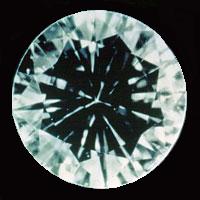
Flat Cut Diamond: What It Is and How It Affects Appearance
A flat cut diamond refers to a diamond that has a shallower cut, where the crown (the upper portion of the diamond) is flat or only slightly angled, and the pavilion (the lower portion of the diamond) may also be less pointed. The flat cut style can influence the diamond’s overall brilliance, sparkle, and appearance.Characteristics of a Flat Cut Diamond
Shallow Cut:A flat cut diamond has a shallower depth compared to standard diamonds, which can cause light to enter and exit the stone in a way that doesn’t maximize brilliance and sparkle.
The crown is typically less angled, and the table (the top surface) may be larger relative to the depth of the diamond.
Shape:Flat cut diamonds are usually found in antique or vintage-style diamonds, particularly in shapes like the Old Mine Cut or Rose Cut.
The facets may be fewer, and the depth of the diamond is minimized to create a more flat appearance.
Lack of Fire:The shallower depth and flat angles may cause the diamond to have less fire (the dispersion of light into different colors), which is often seen in diamonds with deeper cuts like the Round Brilliant.
How the Flat Cut Affects the Diamond’s Appearance
Less Brilliance and Sparkle:Due to the shallow cut, light may not reflect as effectively inside the diamond, leading to reduced brilliance (the white light reflections).
The sparkle may appear less intense compared to diamonds with deeper cuts, such as the Round Brilliant or Princess Cut, which are designed to reflect light more efficiently.
Larger Table:Flat cut diamonds often feature a larger table (the top facet), which gives the diamond a broader appearance, but may also make the diamond appear less dynamic or lively compared to a well-cut diamond that exhibits more movement of light.
Antique or Vintage Look:The flat cut is often chosen for antique or vintage-style jewelry, as it provides a distinctive look that differs from modern diamonds. The flat cut is associated with romantic and historical styles, and can lend a rustic or classic charm to pieces.
More Visible Inclusions:Due to the shallower depth, inclusions or imperfections may be more visible on a flat cut diamond, especially if the diamond is not of very high clarity. A flat cut diamond may also appear less clean due to this.
How Flat Cut Diamonds Are Used
Vintage Jewelry: Flat cut diamonds are often used in antique-style engagement rings or vintage jewellery due to their historical appeal.
Rose Cut Diamonds: One of the most common types of flat-cut diamonds is the Rose Cut, which features a flat base and a domed, faceted top. The Rose Cut is prized for its vintage charm and subtle brilliance.
Pros and Cons of a Flat Cut Diamond
Pros:Unique, Antique Look: Ideal for those who want a distinctive, vintage style.
Larger Table: A flat cut often appears larger, giving the diamond a wider visual presence.
Classic Appeal: Perfect for vintage-inspired designs or antique jewellery.
Cons:Reduced Brilliance: Less sparkle and brilliance compared to modern diamonds with deeper cuts.
More Visible Inclusions: Inclusions may be easier to see due to the shallow depth.
Lower Fire: Less dispersion of color, meaning fewer flashes of light.Flat Cut Diamonds
A flat cut diamond offers a unique, vintage look with its shallower depth and broader table. While it lacks the brilliance and fire of modern diamonds with deeper cuts, it is highly desirable for its antique charm and is often used in vintage-style or classic jewellery. If you’re looking for a diamond with a more traditional appearance or distinctive style, a flat cut might be the perfect choice, but it’s important to understand the trade-offs in light performance.Would you like to explore more about vintage diamonds or specific diamond cuts?
- Flawless
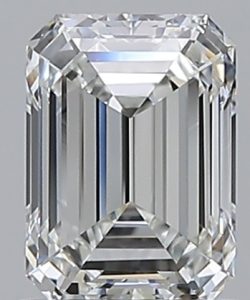
What Does Flawless Mean in Diamonds?
Flawless is a clarity grade used to describe diamonds that have no visible inclusions (internal flaws) or blemishes (external flaws) under 10x magnification.
A diamond graded as Flawless (abbreviated as FL) is the highest possible clarity grade and is considered exceptionally rare.
How Flawless Diamonds Are Graded
Diamonds are graded for clarity based on the presence and visibility of internal and external characteristics (inclusions and blemishes). The GIA Clarity Scale defines the following:FL (Flawless):
No internal or external imperfections visible under 10x magnification.
IF (Internally Flawless):
No internal imperfections visible under 10x magnification, but there may be minor surface blemishes.
These diamonds are extremely rare and valuable due to their purity and perfection. Most diamonds on the market fall into lower clarity categories such as VVS (Very, Very Small Inclusions) or VS (Very Small Inclusions).Characteristics of Flawless Diamonds
No Inclusions or Blemishes:A flawless diamond has perfect clarity with no visible flaws or defects when viewed under magnification. This includes no inclusions (internal flaws like air bubbles, fractures, or minerals trapped inside the diamond) and no blemishes (external imperfections such as scratches, nicks, or polishing marks).
Perfect Symmetry:Flawless diamonds often have ideal proportions and symmetry, contributing to their brilliance and sparkle. Their cut is typically excellent, allowing the diamond to reflect light in the best possible way.
Extremely Rare:Only about 0.1% of diamonds receive the Flawless grade, making them extremely rare and highly prized in the market.
Why Are Flawless Diamonds Highly Prized?
Ultimate Purity:Flawless diamonds are considered the epitome of purity and are often viewed as a symbol of perfection. They appeal to those looking for a diamond with no visible imperfections.
Exquisite Beauty:With no inclusions or blemishes to obscure the light, flawless diamonds are renowned for their exceptional brilliance, fire, and sparkle. They reflect light perfectly, creating a dazzling visual effect.
Investment Value:Due to their rarity and desirability, flawless diamonds often appreciate in value over time. They are considered a good investment in the luxury diamond market.
Symbol of Status:A flawless diamond is seen as a luxury and status symbol because of its rarity and perfection. It is often chosen for special occasions like engagement rings and high-end jewelry pieces.
Flawless Diamonds vs. Other Clarity Grades
Internally Flawless (IF):
These diamonds are almost identical to flawless diamonds but may have minor surface blemishes that are difficult to spot without magnification. They are slightly less expensive than flawless diamonds but still offer exceptional clarity.Very, Very Slightly Included (VVS):
Diamonds in this category have tiny inclusions that are difficult to detect even under 10x magnification. While still very high in clarity, they are more common and affordable than flawless diamonds.Slightly Included (SI) and Included (I):
Diamonds with these grades have more noticeable inclusions, which can be visible to the naked eye in some cases. These diamonds are typically less expensive.How to Care for Flawless Diamonds
Flawless diamonds do not require any special care beyond what is recommended for all diamonds, but because they are so rare and valuable, they are often kept in secure storage and handled with extra care. To maintain their brilliance:Regular Cleaning:
Clean the diamond regularly using a soft toothbrush and warm, soapy water to remove dirt and oil.Avoid Contact with Harsh Chemicals:
Be cautious of chemicals that can affect the surface or clarity of the diamond, such as cleaning agents, hairspray, and perfumes.Proper Storage:
Store the diamond in a soft pouch or case to avoid scratches or exposure to other harder materials. - Fluorescence
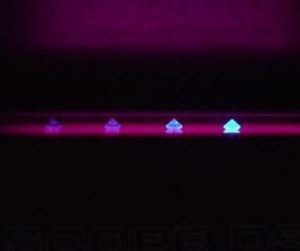
Fluorescence in Diamonds: What It Is and How It Affects Your Diamond
Fluorescence in diamonds refers to the glow that a diamond emits when exposed to ultraviolet (UV) light. When a diamond has fluorescence, it can show a blueish glow (or, in rare cases, other colours) under UV light. This phenomenon is due to the presence of trace elements, typically boron or nitrogen, in the diamond’s crystal structure.How Fluorescence Works in Diamonds
Ultraviolet Light Exposure:Fluorescence occurs when a diamond is exposed to UV light—such as sunlight, certain types of lamps, or black lights—which excites the molecules in the diamond and causes them to emit visible light in a blue hue.
Intensity of Fluorescence:The level of fluorescence can range from none to very strong. This is graded as follows:
None: No fluorescence under UV light.
Faint: The diamond shows a very slight fluorescence.
Medium: Noticeable fluorescence, but not very strong.
Strong: The diamond emits a noticeable glow when exposed to UV light.
Very Strong: The diamond gives off an intense glow in UV light.
Color of Fluorescence:Most diamonds with fluorescence exhibit a blue glow, but in rare cases, the fluorescence can be yellow, green, or white. Blue fluorescence is the most common and generally considered desirable, as it can complement the diamond’s appearance and enhance its overall sparkle.
Fluorescence and Diamond Appearance
Visible Effects in Regular Lighting:In general, fluorescence is not visible under normal lighting conditions. The glow only appears when the diamond is exposed to UV light. In everyday settings, such as under natural sunlight or incandescent lighting, fluorescence typically does not affect how the diamond looks.
Fluorescence and the Diamond’s Color:Fluorescence can sometimes impact the appearance of a diamond’s color:
For diamonds with lower color grades (like K, L, or M), the blue fluorescence can give the diamond a whiter or brighter appearance, somewhat masking yellowish or brownish hues.
However, for higher color diamonds (like D, E, or F), fluorescence may cause the diamond to look duller or less bright, as the blue glow can contrast with the diamond’s natural whiteness.
Fluorescence and Diamond Clarity:Fluorescence does not affect the clarity of a diamond, but it can sometimes make inclusions more visible in strongly fluorescent diamonds, especially under UV light. In extreme cases, fluorescence can make inclusions appear milky or cloudy, reducing the overall aesthetic.
Pros and Cons of Fluorescence in Diamonds
Pros:
Can Enhance Appearance for Lower Color Diamonds:Blue fluorescence can make diamonds with lower color grades appear whiter or more colorless, which may be an advantage for buyers on a budget.
Increased Value for Some:Some buyers find fluorescence desirable, especially when it gives the diamond an extra glow. It may also be perceived as a sign of rarity and uniqueness.
Unique Visual Effect:Under UV light, the blue glow of a fluorescent diamond can create a unique visual effect that makes the diamond stand out.
Cons:
Potential for Reduced Value:In some cases, diamonds with strong fluorescence may be valued less than those with no fluorescence, particularly in high-color diamonds, where the blue glow might interfere with the diamond’s natural brilliance.
Possible Cloudiness:Strong fluorescence, especially in diamonds with a low clarity grade or inclusions, can cause the diamond to appear cloudy or milky in appearance under certain lighting conditions.
Not Always Desired:Some buyers prefer diamonds without fluorescence because it can introduce a blueish tint that does not appeal to everyone. People who prefer the purest white diamonds may shy away from fluorescent stones.
Fluorescence in Diamond Grading
GIA Grading:The GIA (Gemological Institute of America) grades fluorescence on a scale of None, Faint, Medium, Strong, and Very Strong.
GIA’s grading report will include the fluorescence grade, so potential buyers can make an informed decision.
Fluorescence vs. Other Factors:Fluorescence is just one of many factors in determining a diamond’s value. While it can influence the overall appearance, it does not affect the diamond’s cut, carat weight, or clarity.
How Fluorescence Affects Diamond Pricing
Fluorescent Diamonds Can Be Less Expensive:
Generally, diamonds with strong fluorescence may be priced lower than diamonds with no fluorescence, especially if the fluorescence causes visible cloudiness or makes the diamond appear less brilliant in normal lighting.Fluorescence Can Add Character:
However, some buyers appreciate the added glow and distinctiveness of fluorescent diamonds, and the blue fluorescence can actually increase the diamond’s appeal. The rarity of strong fluorescence in diamonds can sometimes be a selling point, adding value for certain collectors. - Four C’s
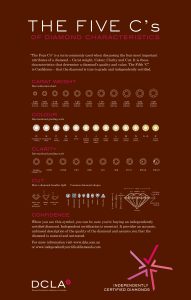
The Four C’s of Diamonds: Cut, Colour, Clarity, and Carat Weight
The Four C’s are the standard criteria used to evaluate and grade diamonds. Understanding these factors helps you choose the best diamond for your needs, whether for an engagement ring, jewellery, or investment. Here’s a breakdown of each C:1. Cut: The Most Important “C”
What It Is:
The cut refers to how well the diamond has been shaped and faceted, impacting its brilliance (sparkle) and overall appearance. Unlike the diamond’s other characteristics, the cut is man-made, so it can be influenced by the diamond’s cutter.Why It’s Important:
A well-cut diamond will reflect light beautifully, making it sparkle and shine. The precision of the cut can enhance or detract from a diamond’s natural beauty. Even the highest-quality diamonds with poor cuts can appear dull.Cut Grades:
Excellent: Maximises brilliance with precise symmetry and proportions.
Very Good: Nearly as brilliant as excellent cuts, with minor differences.
Good: Fairly good brilliance, but may have some visible flaws in symmetry or proportions.
Fair: Less brilliance due to poor proportions or symmetry.
Poor: The diamond lacks brilliance and light return, often looking dull.
Key Factors of Cut:Proportions: The diamond’s height, width, and depth must be in proper balance.
Symmetry: The alignment of the facets and angles.
Polish: The smoothness of the surface, affecting how well the diamond reflects light.
2. Colour: The Absence of Colour
What It Is:
The colour of a diamond refers to how colourless or yellow the diamond appears. The less colour, the more valuable the diamond, as colourless diamonds are rarer and more highly prized.Why It’s Important:
The more colourless a diamond is, the more light it can reflect, enhancing its sparkle. Yellow or brown tints can reduce the diamond’s brilliance.Colour Grades: The GIA grades diamonds on a scale from D (colourless) to Z (light yellow or brown).
D-F: Colourless – These diamonds are highly prized for their lack of any visible colour.
G-J: Near Colourless – These diamonds show very slight colour, but the tint is usually undetectable to the naked eye.
K-M: Faint Yellow – These diamonds may show a slight yellow or brownish tint.
N-Z: Light Yellow or Brown – These diamonds have noticeable colour, often making them more affordable.
3. Clarity: The Presence of Inclusions and Blemishes
What It Is:
Clarity refers to the number, size, and location of inclusions (internal flaws) and blemishes (external imperfections) in a diamond. The fewer inclusions or blemishes, the higher the clarity grade and the more valuable the diamond.Why It’s Important:
While inclusions can sometimes affect a diamond’s brilliance, many diamonds have small imperfections that are invisible to the naked eye. It is essential to consider how visible these imperfections are when evaluating clarity.Clarity Grades:
Flawless (FL): No internal or external imperfections visible under 10x magnification.
Internally Flawless (IF): No internal flaws, though surface blemishes may be present.
Very, Very Slightly Included (VVS1, VVS2): Inclusions are very difficult to detect even under 10x magnification.
Very Slightly Included (VS1, VS2): Inclusions are minor and visible only under magnification.
Slightly Included (SI1, SI2): Inclusions are noticeable under magnification, but not to the naked eye.
Included (I1, I2, I3): Inclusions are visible to the naked eye and can affect the diamond’s clarity and brilliance.
4. Carat Weight: The Size of the Diamond
What It Is:
Carat weight measures the size of the diamond. One carat equals 200 milligrams, or 0.2 grams. While carat weight directly influences a diamond’s size, it does not necessarily correlate with the diamond’s quality—a smaller diamond can still be of higher quality if it has better cut, colour, and clarity.Why It’s Important:
The size of the diamond is often one of the most noticeable factors when buying a diamond. Larger diamonds, especially those with high quality, are more expensive and rarer. However, it’s essential to balance size with the other C’s to ensure a diamond’s overall beauty and value.Carat Weight and Price:
Larger diamonds are more expensive, but prices increase exponentially for diamonds with higher carat weight. Two diamonds of the same weight can differ greatly in price depending on their cut, colour, and clarity.How the Four C’s Work Together
The Four C’s are all interrelated. For example, a diamond with excellent cut and high clarity might appear more brilliant than a larger diamond with lower clarity or colour grade.
Balance is key: While carat weight can give the appearance of size, the cut and clarity have a significant impact on the diamond’s overall sparkle. For diamonds with strong fluorescence, colour and clarity may be slightly affected.Choosing the Right Diamond
When choosing a diamond, you need to consider the Four C’s carefully based on your preferences and budget:If sparkle and brilliance are most important to you, cut is the most significant factor.
If you want a diamond that appears as colourless as possible, focus on the colour grade.
If you’re looking for a diamond with few imperfections, you’ll need to pay attention to the clarity.
For a larger stone, focus on the carat weight, but balance it with the other C’s for the best overall result. - Fracture
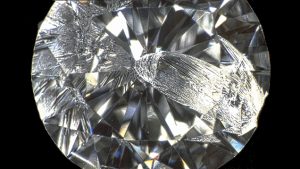
Fractured Diamond: What It Is and How It Affects the Diamond
A fractured diamond refers to a diamond that has an internal fracture, often called a fracture or crack. These fractures can occur during the diamond’s formation or due to external pressure or mishandling during the cutting process. The fracture may be visible or microscopic, depending on the severity.Types of Fractures in Diamonds
Internal Fracture (Inclusion):What It Is: This refers to a crack or break inside the diamond, which can occur naturally during its formation or as a result of external pressure.
How It Affects the Diamond: An internal fracture can affect the diamond’s clarity grade. If the fracture is large or visible, it can lower the diamond’s quality and affect its brilliance and durability. These fractures are often categorized under inclusions in clarity grading.
Surface Fracture (Blemish):What It Is: A surface fracture, or blemish, is a crack on the outer surface of the diamond, usually caused by accidental damage.
How It Affects the Diamond: While these types of fractures are visible to the naked eye and can detract from the diamond’s overall appearance, they generally don’t impact the diamond’s internal integrity or overall clarity grade.
Fracture-Filled Diamonds
Some diamonds with fractures may undergo a process known as fracture filling. This process involves filling the fracture with a transparent resin or glass-like substance to improve the diamond’s appearance and clarity.How It Works:
The process involves applying heat and pressure to fill the fracture with a substance that makes the crack less visible.
The goal is to enhance clarity by making the fracture less noticeable to the naked eye.
Impact on Value:
Fracture-filled diamonds are generally less valuable than untreated diamonds because they are perceived as less durable. Over time, the filling can discolour or even break down, affecting the appearance and integrity of the diamond.
It’s important to note that diamonds treated in this way are typically marked as fracture-filled diamonds, and this treatment is disclosed on certification reports.
How Fractured Diamonds Are Graded
Diamonds with fractures will be evaluated based on the clarity grading system, which looks at the size, location, and visibility of the fracture (or inclusion):Flawless (FL): No fractures or inclusions.
Internally Flawless (IF): No internal fractures, though surface imperfections may exist.
Very, Very Slightly Included (VVS1, VVS2): Fractures are microscopic and very difficult to see under magnification.
Very Slightly Included (VS1, VS2): Minor fractures visible only under magnification.
Slightly Included (SI1, SI2): Fractures are noticeable under magnification and may be visible to the naked eye.
Included (I1, I2, I3): Fractures are visible to the naked eye and can affect the diamond’s durability and appearance.
Potential Risks of Fractured Diamonds
Durability:Fractures can weaken the diamond, making it more susceptible to damage. Impact or stress on the diamond may cause the fracture to worsen, especially in diamonds that have significant inclusions or fractures.
Appearance:A visible fracture can affect the diamond’s brilliance and overall aesthetic. It may interfere with the way light interacts with the diamond, potentially causing it to appear duller or less brilliant than diamonds without fractures.
Value:Diamonds with significant fractures are often less valuable than diamonds with better clarity grades, as the fracture detracts from the diamond’s overall beauty and durability.
Dealing with Fractured Diamonds: Should You Buy or Sell?
When Buying:
If you come across a fractured diamond, you should take extra care in evaluating its clarity and structural integrity. Depending on the location and size of the fracture, it may be worth purchasing if the price is right. However, be cautious of diamonds with large or visible fractures, as they could significantly impact the diamond’s long-term durability and appearance.When Selling:
Selling a fractured diamond may be more challenging due to the impact of the fracture on the diamond’s value. You may want to disclose any fracture filling or inclusions, as honesty can ensure the buyer understands what they’re purchasing.A fractured diamond can still be valuable, but its clarity, appearance, and durability may be compromised depending on the severity of the fracture. If you are buying a diamond with a fracture, it’s important to ensure you’re comfortable with the potential risks, both visually and in terms of long-term durability. If you are selling a fractured diamond, understanding how fractures can affect its value and appearance is crucial. Would you like to explore options for clarity improvement, or how to assess diamonds with fractures more thoroughly?
- Fracture Filling
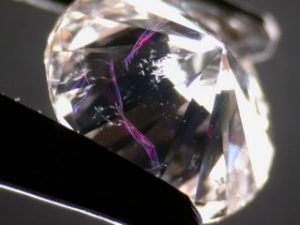
Fracture Filling in Diamonds: What It Is and How It Works
Fracture filling is a treatment used to improve the clarity and appearance of diamonds that have visible fractures or cracks. The process involves filling the internal fractures with a transparent substance, often resin or glass-like material, to make the cracks less visible to the naked eye. This can enhance the diamond’s clarity and overall aesthetic appeal, but it also comes with potential risks.How Fracture Filling Works
Identification of Fractures:Diamonds that have visible fractures or cracks (called inclusions) are first carefully examined under magnification.
The fractures are identified as imperfections that affect the diamond’s clarity and appearance.
Application of Filling Material:The fracture is then filled with a clear, transparent substance (such as resin or glass) that closely matches the diamond’s appearance.
The resin is inserted into the fracture under heat and pressure, causing it to bond with the diamond.
Result:The filled fracture becomes less visible and may be nearly invisible to the naked eye, enhancing the clarity and visual appeal of the diamond.
The treatment improves the diamond’s appearance by making the cracks less noticeable, and it can also enhance light dispersion.
Benefits of Fracture Filling
Improved Clarity:The main benefit of fracture filling is that it makes fractures less noticeable, effectively improving the diamond’s clarity grade.
Lower Cost:Fracture-filled diamonds tend to be less expensive than untreated diamonds with similar features, making them a more affordable option for buyers looking for a larger diamond or one with fewer visible flaws.
Appearance Enhancement:Filling fractures can lead to a brighter, cleaner diamond that has an appearance similar to a higher-clarity stone, especially when the fractures are in highly visible areas.
Risks and Drawbacks of Fracture Filling
Lower Durability:While the resin fills the fractures, it does not make the diamond any stronger. In fact, the treatment can weaken the diamond by reducing its natural resistance to breakage. The filling material is not as tough as the diamond itself and can be damaged under pressure or impact.
Potential Discolouration:Over time, the filling material can discolour or become visible if it breaks down. The resin may change colour, potentially making the fracture more noticeable than before.
Disclosure Requirement:Diamonds that undergo fracture filling should be disclosed as such. Ethical dealers and industry standards require that fracture-filled diamonds be clearly labelled, and the buyer must be informed about the treatment.
Decreased Resale Value:Because fracture-filled diamonds are considered to be less valuable than untreated diamonds, they may not retain their value as well. Additionally, the filled fractures could affect future appraisals or resales.
Fracture-Filled Diamond Grading and Certification
Disclosure on Certificates:
A diamond that has been fracture-filled will often be noted on the certification report, and it’s important for both buyers and sellers to know whether the diamond has been treated. The GIA (Gemological Institute of America), AGS (American Gem Society), and other grading labs will indicate if a diamond has been treated with fracture filling.
Impact on Clarity Grading:
Fracture filling can temporarily improve the clarity grade of a diamond. For example, a diamond with visible cracks (SI2 or I1 clarity) may appear VS1 or better after the treatment. However, this clarity improvement does not last indefinitely, and the filled fracture will not make the diamond equivalent to a naturally flawless diamond.
Ethics and Transparency in Fracture Filling
Full Disclosure:Reputable jewellers and diamond dealers are required to disclose the fracture-filling treatment to buyers, as it affects the diamond’s value and integrity.
Buyers should always ask whether a diamond has been treated in this way and check the certificate for any mention of the treatment.
Long-Term Considerations:While fracture filling can enhance the appearance of a diamond, buyers should be aware that the treatment could be compromised over time, especially with regular cleaning or exposure to high heat or harsh chemicals.
Should You Buy a Fracture-Filled Diamond?
When to Consider a Fracture-Filled Diamond:
If you are looking for a larger diamond or a diamond with better clarity at a lower price, a fracture-filled diamond can be a viable option. Just be sure to understand the risks and limitations of the treatment, especially with regard to durability and long-term appearance.
When to Avoid a Fracture-Filled Diamond:
If you are concerned about the diamond’s long-term durability, resale value, or if you prefer a diamond that has not been treated in any way, it’s best to avoid fracture-filled diamonds.
